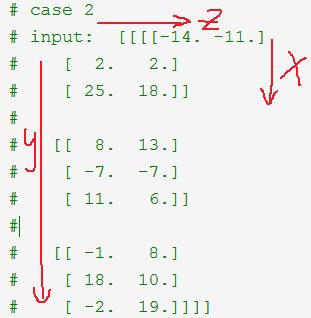#coding=utf-8
import tensorflow as tf
#case 2
input = tf.Variable(tf.round(10 * tf.random_normal([1,3,3,2])))
filter = tf.Variable(tf.round(5 * tf.random_normal([1,1,2,1])))
op2 = tf.nn.conv2d(input, filter, strides=[1, 1, 1, 1], padding='VALID')
#对于filter,多个输入通道,变成一个输入通道,是对各个通道上的卷积值进行相加
init = tf.global_variables_initializer()
with tf.Session() as sess:
sess.run(init)
print("case 2")
print("input: ", sess.run(input))
print("filter: ", sess.run(filter))
print("conv ", sess.run(op2))
# case 2
# input: [[[[-14. -11.]
# [ 2. 2.]
# [ 25. 18.]]
#
# [[ 8. 13.]
# [ -7. -7.]
# [ 11. 6.]]
#
# [[ -1. 8.]
# [ 18. 10.]
# [ -2. 19.]]]]
# filter: [[[[-3.]
# [ 2.]]]]
# conv [[[[ 20.]
# [ -2.]
# [-39.]]
#
# [[ 2.]
# [ 7.]
# [-21.]]
#
# [[ 19.]
# [-34.]
# [ 44.]]]]

#转换:输入为3*3的2通道数据
#通道1:
#[-14 2 25],
#[8 -7 11],
#[-1 18 -2]
#通道2:
#[-11 2 18],
#[13 -7 6],
#[8 10 19]
#conv转换
#[20 -2 -39],
#[2 -7 -21],
#[9 -34 44]
#计算过程
#[-14 2 25],
#[8 -7 11], * [-3] +
#[-1 18 -2]
#[-11 2 18],
#[13 -7 6], * [2]
#[8 10 19]
#result
#[20 -2 -39],
#[2 -7 -21],
#[9 -34 44]




